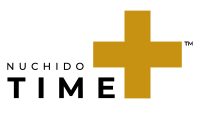NAD+ has been hailed as the 'fountain of youth' and is considered one of the most important molecules for healthy aging. But what exactly is NAD+ and why is it linked to the cellular aging process? This article will detail why NAD+ is vital for your cellular health, the latest research surrounding NAD+ and how you can increase your levels with NAD+ supplements.
NAD+ is critical for cellular health
NAD+ stands for Nicotinamide Adenine Dinucleotide, and it is a natural molecule found in every cell of your body. NAD+ is a coenzyme meaning its presence is required to power many cellular reactions. Within your cells NAD+ is involved in over 500 chemical reactions, it is so critical that without NAD+ we would be dead in 30 seconds!

Some of the most important reactions involving NAD+ are:
- Converting the food you eat into cellular energy (ATP) - NAD+ is an essential part of the reaction that turns the food you eat into the energy that your cells need to maintain their vital functions.
- This reaction takes place in the mitochondria which are the energy powerhouses of the cells. Falling NAD+ levels mean that your mitochondria can’t function as efficiently as they used to causing a decline in cellular energy.
- Switching on cellular maintenance and repair pathways - NAD+ also acts as a signalling molecule, switching on maintenance and repair pathways in the cell. This includes supporting DNA health and promoting cellular defence.
- NAD+ is essential to activate your “longevity genes” - In every cell you have a family of seven proteins called “Sirtuins”. These proteins are nicknamed the “guardians of the genome” because they play a key role in maintaining cellular health and supporting healthy aging. These proteins do not work without NAD+.
Initially discovered in 1906, at first NAD+ was thought to just be important for cellular energy production but over time knowledge has grown, with NAD+ now being identified as a key molecule in supporting healthy aging.
The Salvage Pathway is the main source of cellular NAD+
Most NAD+ within our bodies is made within the cell. As NAD+ is so critical for cellular function there are very efficient mechanisms to ensure the cell has a suitable supply of NAD+.
The three main pathways used by the cell to produce NAD+ are:
- The Preiss-Handler pathway – which converts the amino acid tryptophan into NAD+.
- The de novo pathway - which converts nicotinamide riboside (NR) to nicotinamide mononucleotide (NMN) both of which are NAD+ precursors, used to produce NAD+.
- The salvage pathway – which recycles nicotinamide (NAM) (another NAD+ precursor) back into NAD+.

Out of all the NAD+ production pathways, the salvage pathway is the most important source of cellular NAD+. This is because when NAD+ is used by the cell, it is broken down leaving behind NAM and the salvage pathway recycles this NAM back into fresh NAD+.
This means when we are young, our cells are able to make and recycle all the NAD+ they need to power vital cellular processes.
NAD+ declines and drives cellular aging
When we are young and feel our best, it is because we naturally have high levels of NAD+. However, research has shown that our NAD+ levels decline by 50% every 20 years. Meaning by the time we reach our 40's we are starting to feel the effects of reduced NAD+. While NAD+ levels are impacted by age, they are also impacted by lifestyle with factors such as lack of sleep, alcohol consumption and smoking known to deplete NAD+ levels further.
NAD+ declines with age because the pathways which produce NAD+ (namely the salvage pathway) become less efficient with age, resulting in decreased NAD+ production and recycling. At the same time, the consumption of NAD+ by the body increases greatly.
Ultimately this imbalance of production and consumption means the demand for NAD+ is greater than the supply, leaving key cellular functions which depend on NAD+ struggling to function. This leads to an accumulation of cellular damage that can cause cellular aging.
These discoveries have led to an abundance of research into increasing NAD+ levels to support cellular health and slow cellular aging. Studies show addressing the causes of NAD+ decline can boost NAD+ levels and have many positive benefits including:
- Improved cellular energy levels
- Supporting cognitive function
- Supporting cardiovascular function
- Supporting metabolic health
- Supporting muscle strength
- Supporting cellular defence
- Supporting DNA health
Exercise, Fasting and Supplements boost NAD+ levels
Exercise and fasting are known to be natural ways to increase your NAD+ levels. They do this by causing energy stress within the cell. This activates the cellular energy sensor AMPK, which then stimulates NAD+ production to increase cellular energy.
Another method to increase NAD+ levels is via NAD+ supplements. By targeting the key parts of the NAD+ network which become altered with age, Nuchido TIME+ restores the youthful balance of NAD+ production and consumption by:
- Increasing the cell’s ability to make and recycle NAD+ via the salvage pathway
- Reducing the excessive consumption of NAD+
- Increasing the supply of raw ingredients to further enhance NAD+ production
In our clinical trial Nuchido TIME+ was shown to increase NAD+ levels and improve a variety of other cellular health markers.
Overall, NAD+ is critical for cellular health. With the decline in NAD+ being a key driver of the cellular aging process. Therefore, anyone looking to age well should prioritise increasing their NAD+ levels.
